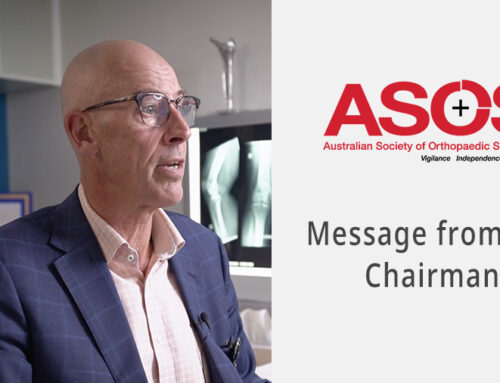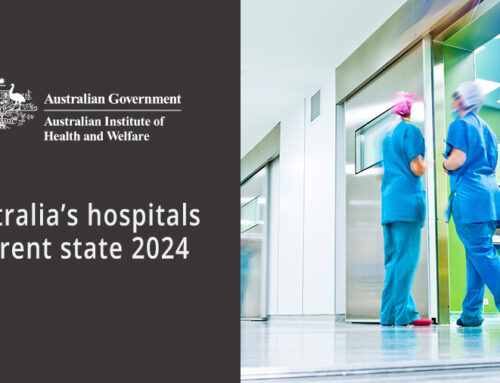Independent review of Australia’s regulatory settings relating to overseas health practitioners (Kruk Report) – Robyn Kruk AO, August 2023 (123 pages)
Acronyms
- IQHPs – internationally qualified health practitioners
- AHPRA – Australian Health Practitioner Regulation Agency
- DOHA – Department of Home Affairs
- SA – Services Australia
- IMG – International medical graduates
Who is Robyn Kruk?
Robyn Kruk is a senior public servant (State and Commonwealth). She has a Bachelor of Science in Psychology (Honours) and Masters degree in Administration.
Key message of review
“Removing unnecessary regulatory barriers faced by IQHPs will improve care for Australians”.
What is the problem?
- “Australia is facing a shortage of key healthcare practitioners”.
- Response by National Cabinet was an “independently led rapid review of Australia’s regulatory settings for the registration of overseas health practitioners and the recognition of their skills and qualifications”.
Claims
- Australia’s health care system is widely regarded as one of the best in the world.
- Our health workforce one of the most highly educated among OECD.
- Between 1 Jan 2022 and 30 July 2023 [18 months], more than 27,000 IQHPs registered to practice in Australia (16,000 nurses and midwives, 6,000 doctors and 5,000 allied health professionals).
- Increasing pressure on service delivery due to COVID, aging population, rising chronic conditions & demand for more workforce flexibility.
- NSW: 1 in 10 people are waiting around 160 days for semi-urgent elective surgery and more than 20hrs in emergency departments.
- Employment projections in healthcare and social assistance industry is 301,000 or 15.8% over the 5 years to Nov 2026.
- Public and private employers struggling to recruit health practitioners with around 44% job vacancies unfilled.
- Priority areas identified by States and Territories. GPs, nurses, midwives, dentists, Occupational therapist, physiotherapist, psychologist and radiation therapists.
- Growing demand for speech pathology and social work.
- Some people (in regional, rural & remote Australia) do not have access to basic health services (GPs, nurses and mental health professionals) within a 60min drive.
- Some health practitioners not accepting new patients (paediatricians, occupational therapists & psychologist).
- Worldwide shortage of health professionals estimated to be 18,000,000 health workers by 2030. (Global health workforce)
Claims regarding specific issues
- Lack of current sectorial integrated national, state and regional workforce data.
- No agreed up-to-date set of data on the workforce. (pieces together state of workforce from fragmented data available and feedback from regional bodies)
- 80% of health workforce are Australian trained practitioners.
- Australian governments looking to more effectively use and grow schools of existing workforce including ensuring individuals work to their full scope of practice, multi-disciplinary teams and using technology to deliver services and specialists’ care.
- “Registration ensures that Australians can be confident of safe and quality care.”
- “Feedback from IQHPs is that the end-to-end journey is complex, costly and slow.” [No reference given.]
- Many different regulators (AHPRA, DOHA & SA)
- Duplicated information for different regulators.
- Process frustrating, confusing, convoluted and duplicative.
- 40% of IQHPs report “the journey negatively affected their mental health or wellbeing”.
- Australian health practitioners are being targeted for recruitment by overseas employers.
- “Practitioners who specialise can face particularly high barriers unlike graduates with recent exam experience; many struggle to meet the required standard.”
- Almost ½ IQHPs feel their prior professional and clinical experience is insufficiently recognised.
- Many IQHPs need to work in more junior roles and receive lower pay for initial period.
- Applicant report the process makes them feel undervalued, disrespected and even demeaned.
- Unable to have their qualifications, skills and experience recognised, so would need to retrain or undertake further study before they can be registered.
- AHPRA is digitising application forms and processes while DOHA is streamlining the process and rules for the migration system.
- Supervision of IMGs is virtual in Canada. UK shifting from direct equivalence of qualifications to focusing on learning outcomes, skills and knowledge.
- Easier, cheaper and faster for IQHPs to be registered in other comparable countries.
Priority recommendations
- Streamline regulatory requirements so that applicants need to provide and meet requirements once. (move to single portal over time) [Rec 1]
- Remove or suspend the requirement for employers to advertise domestically. [Rec 3]
- Broaden the age exemption on skilled visas. [Rec 4]
- Introduce or expand expedited pathways for all profession in acknowledged areas of shortage. (priority professions to be collectively identified by health ministers) [Rec 9]
- Ensure registration assessment for all registered professions explicitly recognise skills and experience in addition to qualifications and training pathways with conditions on registration, used as a temporary risk mitigation strategy where appropriate and legislate recognition of skills and experience to avoid doubt. [involves AHPRA, national boards, accreditation authorities and health ministers] – expected impact is to attract more experience and specialised health practitioners by valuing their skills and experience. [Rec 10]
- Support better planning of future workforce. [Rec 8]
- Develop performance indications of progress in the recruitment of more overseas health practitioners in the areas of shortage. [Rec 20]
- Provide applications with greater flexibility in demonstrating their English language competency with a desired impact of increasing success rate from 26 to 40%. [Rec 21]
Australia’s health workforce claims (Pg 20)
- Australia compares favourably with many countries in the OECD for the number of doctors and nurses per 1000 inhabitants.
- 4th behind Switzerland, Norway and Ireland.
- 4 practicing doctors per 1000 population. Lower than Germany, Norway. Switzerland and Sweden. Ahead of NZ, UK & USA.
- 3,000 international students enrolled in Australian medical schools in 2022.
- 20,000 international students enrolled in health-related bachelor courses in 2021, including 15,0000 enrolled in nursing.
- Distribution issues 120.5 FTE GPs per 100,000 people but 65.8 “in very remote areas”
- Flexible workforce needs and decline in average number of hours worked distort headcount numbers.
Key “reforms” to improve end of journey (Pg 41)
- Improve applicant experience.
- Expand fast track registration.
- Better workforce planning.
- Greater flexibility while supporting safety.
- Enhance regulator performance and stewardship.
- “The review has identified several ‘escalation’ recommendations for health ministers to implement should initial changes not generate the desired workforce response within agreed timelines. These include other methods to fast track additional cohorts of IQHPs for registration and changing roles and responsibilities of specialist medical colleges.”
Stephen Milgate AM
CEO, Australian Society of Orthopaedic Surgeons
3 July 2024






